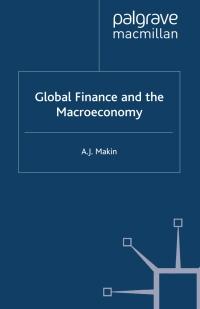Answered step by step
Verified Expert Solution
Question
1 Approved Answer
Question: Should the firm finance the plants machinery upgrade? If so, how should the firm finance it (using the weighted average cost of capital described
 Question:
Question:
- Should the firm finance the plants machinery upgrade? If so, how should the firm finance it (using the weighted average cost of capital described in step 7 or 8) and why? Provide evidence to support your recommendation (e.g., calculate NPV and/or IRR of the CAPEX project) [10 points]
Cost of Capital and Capital Budgeting Ch. 9 mini-case Sap Paper Mill is considering $165 million upgrade of its machinery. Once the plant is upgraded, the machinery will last for 30 years. The upgrade is expected to generate the following net cash flows: $28 million per year in the first decade after the investment $18 million per year in the second decade after the investment $10 million per year in the last decade of the investment At the end of the 30th year, the firm anticipates that it will be able to sell the old equipment as parts for a total salvage value of $2 million. . . Before committing to this investment, the company asked you, their Business Consultant, to evaluate this capital budgeting project given the various sources of funding available to them. To assist you, the firm gathered the following data: The firm's corporate tax rate is currently 21 percent. This tax rate is not expected to change throughout the life of the project. The company can issue 30-year bonds with a 5% coupon, paid semi-annually, and par value of $1,000. The bonds will sell at their face value, but each bond will carry a flotation cost of 1% of the par value. The current price of the firm's 8 percent, $100 par value, preferred stock is $113. If the firm issues new preferred stock, the firm will have to maintain the preferred stock dividend rate constant and pay $2 in flotation costs per each new preferred share issued. The firm's common stock is currently selling for $50 per share. Its last dividend (D) was $4.20 per share. Common stock dividends are expected to grow at a constant rate of 2.5 percent per year in the foreseeable future. If the firm issues new common stock, the net proceeds per share are estimated to be 15 percent less than the current price of common share. Sap's beta is 1.70. The yield on a 30-year US Treasury Bond is 4 percent per year, and the S&P 500 index has a rate of return of 8 percent per year. The firm's target capital structure is 30 percent long-term debt, 10 percent preferred stock, and 60 percent common stock equity. Given this information, the firm asked you to answer the following questions and provide supporting evidence (formulas, calculations, etc) behind your evaluations. Cost of Capital and Capital Budgeting Ch. 9 mini-case Sap Paper Mill is considering $165 million upgrade of its machinery. Once the plant is upgraded, the machinery will last for 30 years. The upgrade is expected to generate the following net cash flows: $28 million per year in the first decade after the investment $18 million per year in the second decade after the investment $10 million per year in the last decade of the investment At the end of the 30th year, the firm anticipates that it will be able to sell the old equipment as parts for a total salvage value of $2 million. . . Before committing to this investment, the company asked you, their Business Consultant, to evaluate this capital budgeting project given the various sources of funding available to them. To assist you, the firm gathered the following data: The firm's corporate tax rate is currently 21 percent. This tax rate is not expected to change throughout the life of the project. The company can issue 30-year bonds with a 5% coupon, paid semi-annually, and par value of $1,000. The bonds will sell at their face value, but each bond will carry a flotation cost of 1% of the par value. The current price of the firm's 8 percent, $100 par value, preferred stock is $113. If the firm issues new preferred stock, the firm will have to maintain the preferred stock dividend rate constant and pay $2 in flotation costs per each new preferred share issued. The firm's common stock is currently selling for $50 per share. Its last dividend (D) was $4.20 per share. Common stock dividends are expected to grow at a constant rate of 2.5 percent per year in the foreseeable future. If the firm issues new common stock, the net proceeds per share are estimated to be 15 percent less than the current price of common share. Sap's beta is 1.70. The yield on a 30-year US Treasury Bond is 4 percent per year, and the S&P 500 index has a rate of return of 8 percent per year. The firm's target capital structure is 30 percent long-term debt, 10 percent preferred stock, and 60 percent common stock equity. Given this information, the firm asked you to answer the following questions and provide supporting evidence (formulas, calculations, etc) behind your evaluations
Step by Step Solution
There are 3 Steps involved in it
Step: 1

Get Instant Access to Expert-Tailored Solutions
See step-by-step solutions with expert insights and AI powered tools for academic success
Step: 2

Step: 3

Ace Your Homework with AI
Get the answers you need in no time with our AI-driven, step-by-step assistance
Get Started


